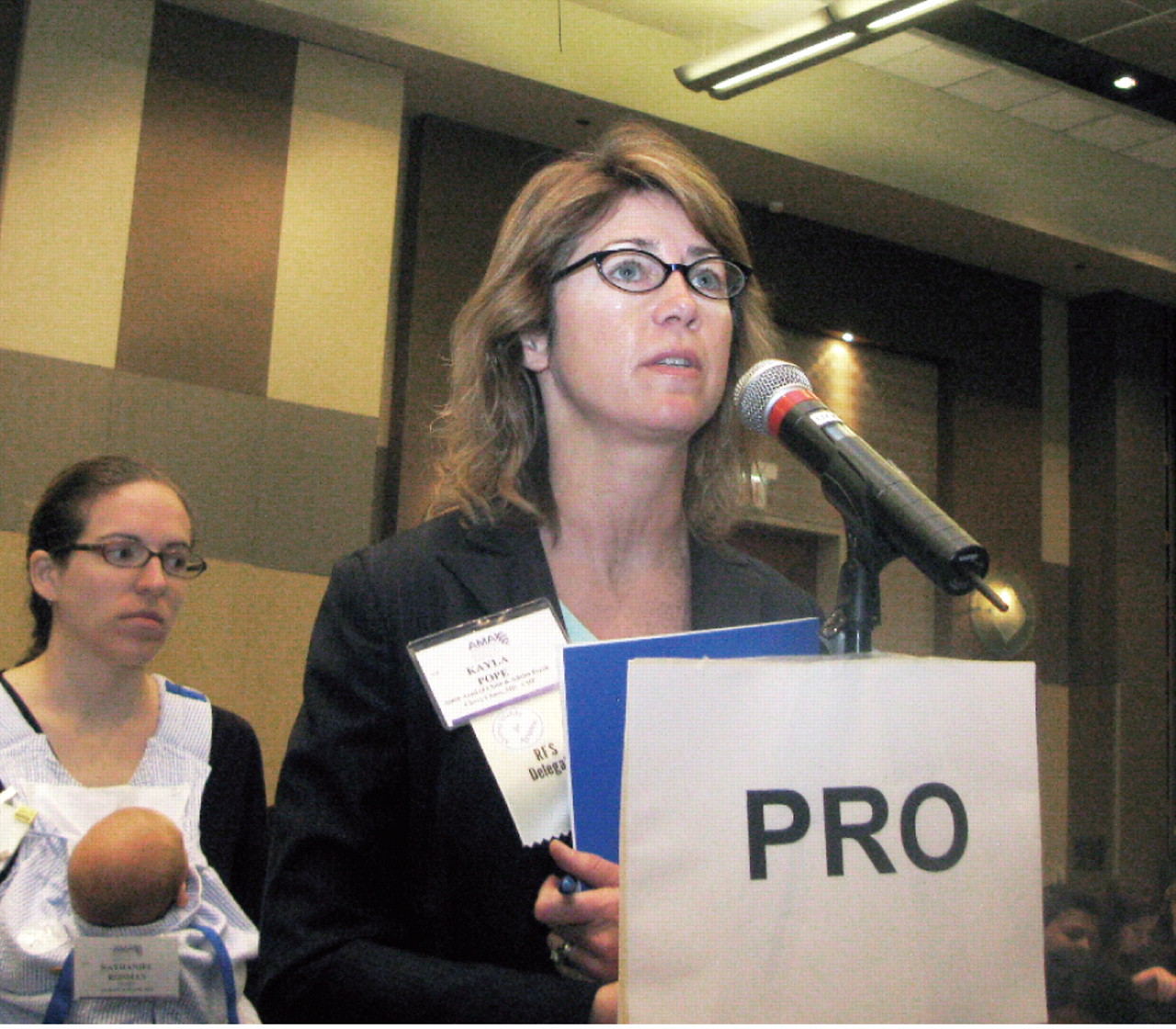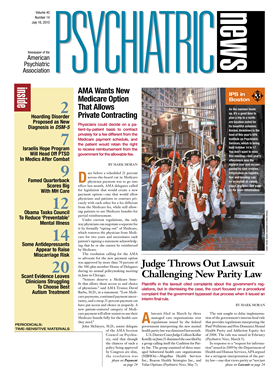The shortage of child psychiatrists in the United States has reached crisis levels.
And in the gap left by that shortage, pediatricians, family physicians, and other doctors prescribing antipsychotic medication to children need guidance regarding safety and appropriate use of such medications.
That's what physicians from several specialties said last month at the AMA House of Delegates' annual policymaking meeting in Chicago in support of two resolutions brought to the house by the Section Council on Psychiatry.
One of those resolutions requests a report from the AMA's Council on Science and Public Health (CSAPH) on the safety and appropriate use of antipsychotics in children. The second, addressing the shortage of child and adolescent psychiatrists, calls on federal agencies to amend current policy to allow National Health Service Corps scholars to complete their training in child and adolescent psychiatry prior to initial practice assignments.
Both resolutions were approved with strong support from other specialties and with no opposition.
Legal, Disciplinary Challenges Involved
The resolutions on antipsychotic medication and on the shortage of child psychiatrists elicited urgent testimony from physicians about an ongoing crisis that is causing clinical and sometimes legal problems for doctors trying to fill the gap left by a shortage of child psychiatrists.
“Antipsychotics are being used with greater frequency, and we have a rising epidemic of mental illness among children,” pediatrician Melissa Garretson, M.D., of Fort Worth, Texas, testified during reference committee hearings on antipsychotic use in children.
“There is a dearth of child and adolescent psychiatrists, so general pediatricians, family physicians, and internal medicine-pediatric doctors are having to take care of these kids with extreme mental health issues,” she said.
“So it's critical that we have information from the AMA about what the indications are for use of these antipsychotics, what their side effects are, and how we can help parents and families minimize the side effects so the kids can get the appropriate care.”
Child psychiatrist Louis Kraus, M.D., a delegate from the American Academy of Child and Adolescent Psychiatry and vice chair of the section council who also does forensic work, testified that there are “tens of millions of dollars of lawsuits against physicians” who prescribe antipsychotics for children and that documentation from the AMA would go a long way toward supporting physicians in legal proceedings.
He added that there are many other physicians who are afraid of using the drugs for fear of losing their licenses.
Similarly, child psychiatrist Maria Lymberis, M.D., an alternate delegate from California, testified that she reviews disciplinary cases that come before the Board of Medicine in California and said that “there are many pediatricians who are facing disciplinary action for prescribing antipsychotic medication without a psychiatric consult.”
“So some guidelines from the AMA would be very welcome,” she said.
Shortage at Crisis Levels
Likewise, the call for amending policies to allow for completion of child and adolescent psychiatry training within the National Health Service Corps was widely supported by physicians from multiple specialties, many of whom testified that the shortage of child psychiatrists was at alarming levels in many parts of the country.
“Even where I practice in Boston, which has the highest number of physicians per capita in the United States, the shortage of child psychiatrists is a crisis,” said pediatric emergency physician Samantha Rossman, M.D., during hearings on the resolution. “I see kids everyday who are on waiting lists to see a psychiatrist, and they show up in my emergency department after they have had [an emergency] or been discharged from school. No one will prescribe their medication, and I don't have the training to manage complex psychiatric illnesses in children. This is really at crisis levels, and there are so many children suffering as a result.”
Child psychiatry fellow Kayla Pope, M.D., said that at the inner-city clinic where she works in Washington, D.C., the average wait for an initial psychiatric evaluation is two or three months. “Two or three months is a really long time for a child who is fighting with a teacher, being aggressive toward his classmates, and spending more time in suspension than in school.”
There was some movement within the reference committee to expand the scope of the resolution to encompass training within the NHSC for all shortage specialties, but the dire nature of the shortage of child psychiatrists was underscored by a number of physicians who argued persuasively that the focus on child psychiatry should be maintained.
“This resolution is specific to child and adolescent psychiatry, where the shortages are profound,” said addiction psychiatrist Mike Miller, M.D., of Wisconsin. “In my field, we know there are not enough addiction medicine docs around. Pediatric addiction medicine physicians? There are so few, we have to rely on [other specialists]. The kids are just not getting access. Almost every area of the country is underserved, and it is acute and tragic in rural areas.”
And Brian Johnson, M.D., an emergency physician in Los Angeles said, “These are some of the most heartbreaking cases—we get kids who are having an acute psychotic break, and there is nowhere to send them. There are no facilities and not enough practitioners, so this really does need to be focused on child and adolescent psychiatry.”

